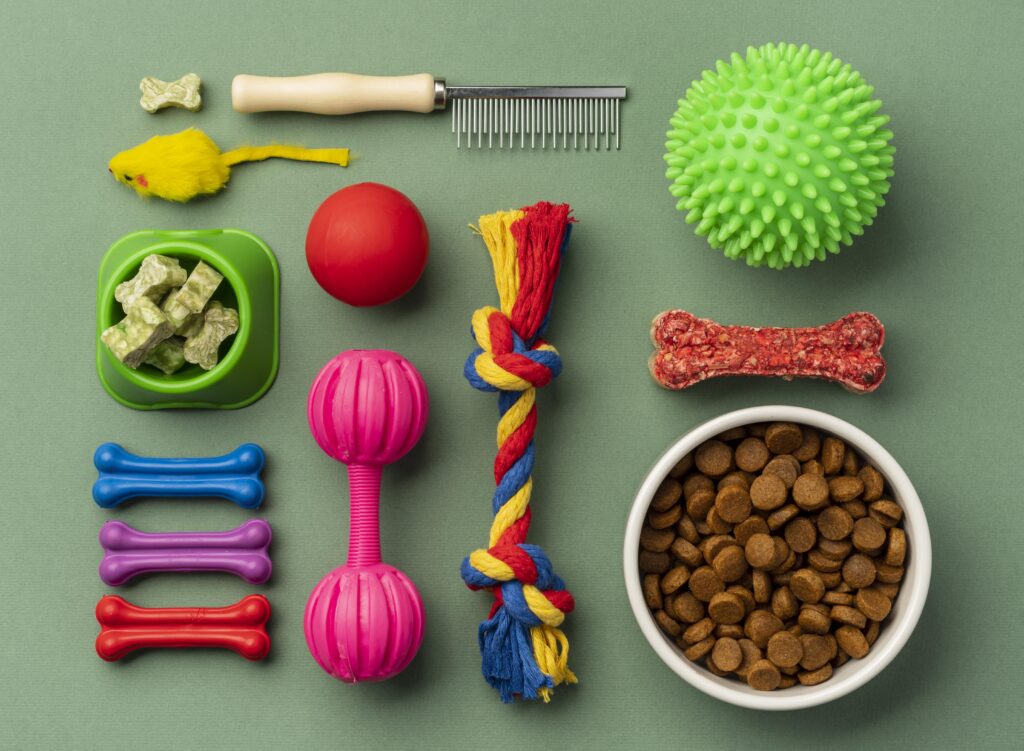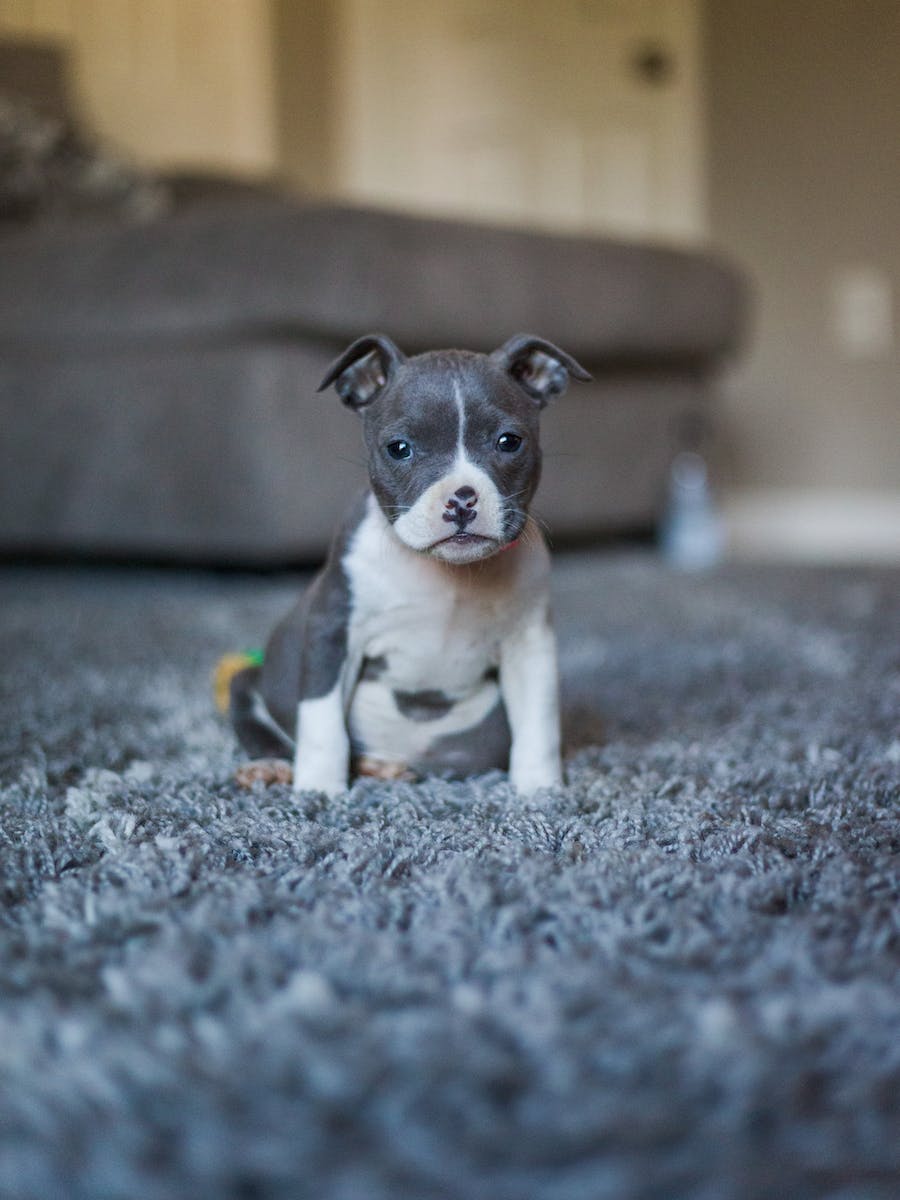Embarking on the rewarding journey of nurturing a pit bull puppy is a remarkable adventure, blending the thrill of companionship with the thought-provoking responsibilities of caring for a young and energetic life. This transformative experience is characterized by a myriad of inquiries that naturally arise, encompassing every facet of their well-being, behavior, and overall development. As ardent proponents of responsible pet ownership, we recognize the significance of providing not only love and companionship but also informed and thoughtful care to our furry friends.
In response to the complexities and questions that arise during this journey, we take pride in presenting this comprehensive guide as your indispensable resource. Crafted with a deep commitment to the principles of responsible pet care, this guide endeavors to assist you in navigating the intricate landscape of pit bull puppy care. Whether you’re a first-time pet owner or a seasoned enthusiast, our aim is to empower you with knowledge, insights, and practical advice that will not only enhance the well-being and happiness of your pit bull puppy but also strengthen the extraordinary bond between you and your four-legged companion.

This guide is more than just a compilation of information; it’s a roadmap to nurturing a harmonious and fulfilling relationship with your pit bull puppy. We invite you to immerse yourself in this wealth of knowledge, embracing the joy and responsibility that come with providing your furry friend with the best possible care. Together, let’s embark on this journey of love, learning, and shared experiences, ensuring a happy and healthy life for your pit bull puppy.
Table of Contents
1. How Much Exercise Does a Pit Bull Puppy Need?
Durability Matters
Choosing the right chew toys for your pit bull puppy is a thoughtful process that involves considerations for both safety and enjoyment. Opt for durability by selecting chew toys crafted from robust, non-toxic materials explicitly designed for the rigorous chewing habits of puppies. Materials such as rubber, nylon, or natural alternatives are excellent choices, providing a satisfying chewing experience while withstanding the strength of a growing pit bull’s jaws.
Safety First
Safety is a top priority when choosing chew toys. Avoid items that could easily break apart, as small, swallowed pieces can pose a choking hazard or lead to digestive issues. Ensuring the selected toys are appropriate for your puppy’s size and chewing strength is essential to minimize any potential risks.
Consider Texture and Design
Furthermore, consider the texture and design of the chew toys. Some puppies may prefer textured surfaces for teething relief, while others may enjoy toys with various shapes and sizes. Offering a variety of chew toys not only keeps your pit bull entertained but also addresses their evolving chewing needs.
Regular Inspection and Replacement
Regularly inspect the chew toys for signs of wear and tear, replacing them as necessary to maintain a safe and enjoyable chewing experience. By thoughtfully selecting chew toys that prioritize both durability and safety, you’re not only promoting good dental health for your pit bull but also fostering a positive and enriching environment for their overall well-being.
2. What are Effective Ways to Deal with Teething?
Navigating the teething phase is a natural and sometimes challenging aspect of pit bull puppy hood. During this time, their gums can become sore and uncomfortable. To alleviate this discomfort, it’s essential to provide appropriate chew toys made of durable materials.

Opt for items that are specifically designed for teething puppies, such as rubber chew toys or those with textured surfaces that can gently massage their gums. Frozen carrots are another excellent option; the cool temperature can provide soothing relief while satisfying their natural urge to chew.
It’s crucial to ensure that the chew toys are safe and durable, as pit bull puppies can be quite enthusiastic chewers. Regularly inspect the toys for signs of wear and replace them as needed to promote a healthy and enjoyable teething experience for your furry friend.
3. How Do I Manage Pit Bull Puppy Chewing Habits?
Pit bull puppies, like many of their canine counterparts, exhibit a natural instinct to chew as part of their developmental process. Channeling this behavior in a positive direction is crucial for both their well-being and the preservation of your belongings. Introduce a diverse selection of chew toys explicitly designed for teething puppies, ensuring they are made of durable materials to withstand the vigorous chewing habits of pit bulls. This not only provides relief for their teething discomfort but also redirects their chewing tendencies away from potentially destructive behaviors.
To keep their interest piqued, rotate the chew toys regularly, introducing new textures and shapes to stimulate their curiosity. By creating an environment that encourages appropriate chewing, you’re not only fostering good behavior but also promoting healthy dental habits and mental stimulation. Consistency in offering a range of engaging chew toys not only supports your pit bull puppy’s physical development but also contributes to a harmonious coexistence between them and your household.
4. What are Important Growth Milestones for Pit Bull Puppies?
Embarking on the journey of nurturing a pit bull puppy involves a keen awareness of their key growth milestones, spanning crucial facets of their development.

Physical Development: The First Pillar
The first pillar of their growth is physical development. Keep a watchful eye on their weight gain, ensuring it aligns with healthy growth patterns. Regular veterinary check-ups are paramount to monitor their overall well-being and to address any concerns that may arise as they progress through different life stages.
Socialization: Shaping a Well-Rounded Companion
Equally vital is the aspect of socialization, a cornerstone in shaping a well-rounded and socially adept pit bull. Introduce them to a diverse array of environments, people, and other animals during their critical developmental stages. Positive socialization experiences not only foster a confident and friendly demeanor but also contribute to preventing behavioral issues as they mature.
Obedience Training: Integral to Growth
Moreover, obedience training is an integral part of their growth journey. Commence training early, focusing on positive reinforcement techniques to instill good behavior and reinforce the bond between you and your pit bull companion. Basic commands and behavioral cues form the foundation for a well-behaved and responsive adult dog.
Holistic Approach: Nurturing a Fulfilling Companionship
In summary, attending to the important growth milestones of pit bull puppies involves a holistic approach. Regular veterinary care, strategic socialization, and positive reinforcement training collectively contribute to nurturing a healthy, well-adjusted, and obedient pit bull, ensuring a fulfilling companionship for years to come.
5. How Do I Choose the Right Chew Toys for my Pit Bull Puppy?
Choosing the right chew toys for your pit bull puppy is a thoughtful process that involves considerations for both safety and enjoyment. Opting for durability is paramount; select chew toys crafted from robust, non-toxic materials explicitly designed for the rigorous chewing habits of puppies. Materials such as rubber, nylon, or natural alternatives are excellent choices, providing a satisfying chewing experience while withstanding the strength of a growing pit bull’s jaws.
Safety is a top priority when choosing chew toys. Avoid items that could easily break apart, as small, swallowed pieces can pose a choking hazard or lead to digestive issues. Ensuring the selected toys are appropriate for your puppy’s size and chewing strength is essential to minimize any potential risks.
Furthermore, consider the texture and design of the chew toys. Some puppies may prefer textured surfaces for teething relief, while others may enjoy toys with various shapes and sizes. Offering a variety of chew toys not only keeps your pit bull entertained but also addresses their evolving chewing needs.
Regularly inspect the chew toys for signs of wear and tear, replacing them as necessary to maintain a safe and enjoyable chewing experience. By thoughtfully selecting chew toys that prioritize both durability and safety, you’re not only promoting good dental health for your pit bull but also fostering a positive and enriching environment for their overall well-being.
Conclusion: Nurturing Your Pit Bull Puppy’s Well-Being
In the pursuit of ensuring a happy and healthy upbringing for your pit bull puppy, unraveling the intricacies of their care through expert advice becomes a guiding light. This comprehensive exploration into common questions about pit bull puppy care has equipped you with the tools to nurture a fulfilling life for your furry companion.
Addressing their exercise needs lays the foundation for robust physical health and mental well-being. Regular walks, engaging playtime, and interactive games not only burn off excess energy but also contribute to the development of a strong, agile, and content pit bull.
Managing the teething phase, an inevitable rite of passage, involves thoughtful selection of appropriate chew toys and techniques. This not only alleviates discomfort but also redirects their natural chewing instincts towards safe and satisfying outlets.
Delving into the nuances of chewing habits emphasizes the importance of durable, non-toxic toys tailored to their needs. By steering their tendencies away from destructive behaviors, you’re fostering an environment that encourages positive habits, contributing to both dental health and overall satisfaction.
Monitoring growth milestones, from physical development to socialization and obedience training, forms the backbone of a holistic approach. Regular veterinary check-ups, diverse social experiences, and early positive reinforcement training collectively mold a well-adjusted, obedient, and socially adept pit bull.
In concluding this insightful journey into pit bull puppy care FAQs, the blueprint for a thriving companion is clear. By integrating expert advice into your daily routine, you’re not just caring for a pet; you’re shaping a resilient, content, and happy member of your family. May your pit bull puppy’s journey be filled with joy, vitality, and the cherished moments that come with a devoted and well-cared-for canine companion.
FAQs
1. What’s the Best Diet for a Pit Bull Puppy?
A well-balanced diet is essential for your pit bull puppy’s growth. Consult with your veterinarian to determine the right mix of protein, fats, and carbohydrates. High-quality puppy food, suitable for their age and breed, will provide the necessary nutrients for their development.
2. How Can I Socialize My Pit Bull Puppy Safely?
Socialization is crucial for a well-rounded pit bull. Start early and expose them to various environments, people, and other pets. Organize controlled playdates, enroll in puppy socialization classes, and reinforce positive interactions to build their confidence and sociability.
3. What’s the Ideal Training Routine for Pit Bull Puppies?
Establish a consistent training routine that includes basic commands like sit, stay, and come. Use positive reinforcement techniques such as treats and praise. Short, engaging sessions multiple times a day are more effective than longer, less frequent ones. Be patient and consistent in your training approach.
4. How Do I Create a Safe Space for My Pit Bull Puppy?
Designate a secure and comfortable area in your home for your pit bull puppy. Use a crate for sleeping and as a safe retreat. Ensure the space is free from potential hazards, such as electrical cords or small objects that could be chewed. Gradually expand their access to other areas as they demonstrate responsible behavior.
5. When Should I Transition from Puppy to Adult Food?
Consult your veterinarian for guidance on when to transition from puppy to adult food. Typically, this occurs around the age of one, but individual needs may vary. Gradually introduce the new food to avoid digestive upset, and monitor their weight and energy levels during the transition.

